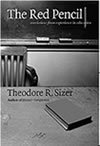 By Theodore Sizer (Yale University Press, 160 pages, $23.00) BUY NOW!
By Theodore Sizer (Yale University Press, 160 pages, $23.00) BUY NOW!
reviewed by Jill Davidson
At The Red Pencil’s start, Ted Sizer—founder and chairman emeritus of the Coalition of Essential Schools—takes us into his tenth-grade Latin class, a starkly terrifying scene imbued with anything but “unanxious expectation.” Mr. Barrell’s classroom was a place of right or wrong—no discussion, no second attempts, just constant, impersonal judgment etched into a gradebook with a red pencil. Sadly, as Sizer notes, his long-ago experience seems familiar, a still discernable image of what school often is.
As this self-described “argument wrapped in a memoir” unfolds, Sizer describes three silences—familiar, yet mainly disregarded—that prop up education’s status quo, and suggests a range of approaches to shatter those silences. Sizer uses personal experience as evidence, linking to his arguments details of his fifty years of intellectual explorations, participation in policymaking, leading a national movement for school change, and daily work in schools. This tour through Sizer’s intellectual life is gratifying and fascinating for the thousands of us who have been shaped by his views.
The first silence: education is the effect of all of the complicated, intermingled factors in student’s lives. “High schools alone cannot do the job assigned to them,” writes Sizer. That education is the product of the multiple and overlapping worlds surrounding children is commonsensical yet woefully unattended in our nation’s schools. This silence is labeled “Building,” referring to the severe limits of the notion that school buildings are where education happens.
The second silence concerns authority, particularly the heavy-handed role of the state and the resulting implications for democracy. A fetish for “the regularities of schooling”—the persistence of the factory model of education—is the basis for the third silence. Sizer knows that these ideas aren’t revelations, but they persist and pervade because “we largely fail to muster the honesty and intensity that reform requires.” The silences are the monolithic compromises of our society.
Sizer suggests approaches toward solutions that would shatter these silences. For example, the start of the “Authority” chapter sets forth a bare-bones framework for democratically managing the responsibility of public education. The state raises the money, ensures that schools exist, and holds them accountable to their claimed goals. The schools—in varied forms—create themselves according to their community’s needs and dreams. Families then choose which school best serves their child’s needs. Authority is shared.
Sizer argues steadily and persuasively throughout The Red Pencil for choice as a method to balance authority within and restore order to the enterprise of schooling all children with public funds, and he establishes his connection to the idea of school choice before it was appropriated by far-right concerns. Sizer recounts the events that led to his co-authoring the Poor Children’s Bill of Rights, published in Psychology Today in 1968. The Poor Children’s Bill of Rights proposed that economically disadvantaged children receive supplemental funds in addition to their district allocations. Those children could take the sum of their monies elsewhere, to other schools or to other districts. “This notion of the money following the child” reads now like an endorsement of vouchers, but Sizer argues that it’s the best and most respectful way to treat families trying to find the good schools for their children. Indeed, public schools of choice in various forms—districts with choice, charter schools, alternative schools—have become a main focus of CES National’s work.
Sizer revisits the silences in the fourth chapter, “Horace Compromised,” which reintroduces Horace Smith (of Horace trilogy fame) and tells the story of the founding and development of the Coalition of Essential Schools. Having detailed the silences of building, authority and order, Sizer asks why the American public is so unwilling to challenge the status quo when it’s so evident that we must. He traces five possible reasons for this state of affairs: the wealthy opting out of public education, expense, complexity, fear, and the failure of imagination and leadership in higher education (this Sizer notes with some self-recrimination).
The epilogue collects the book’s proposals and analyzes their feasibility, taking note of the current movement of schools—many recently born, many associated with the Coalition of Essential Schools—that reflect the values of “real world work,” choice, progress by student performance, personalization, and community inclusion. Sizer notes that these few schools tend to attract antipathy on the part of “traditional school authorities,” and are therefore on slippery political ground. But they—many of them Essential schools—represent tremendous hope and an evolving redefinition of “school.”
The Red Pencil’s depiction of how much needs to change is sobering. Yet, as Sizer affirms, “It is a road worth taking.” The Essential schools that Sizer has inspired over the past two decades demonstrate the value of breaking the silences and allowing new modes of public education to prosper.
